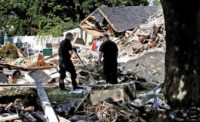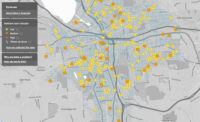Gas Leak Detection Tool Allows for High Speed Leak Discovery

In early August, a specially equipped sports-utility vehicle detected four potential gas-pipe leaks while motoring along a California highway. The improved detection capacity is due to a recently developed, highly sensitive gas-leak detection technology.
The technology, developed by Picarro, Santa Clara, Calif., uses a patented form of cavity-ring down spectroscopy (CRDS) to detect gas leaks even while driving. CRDS measures the near-infrared absorption spectrum to determine what gas-phase molecules may be present in the air around gas pipes and in what concentration, states a Picarro white paper. It uses a three-mirror cavity and a tunable single-frequency diode laser to create a continuous laser wave. By measuring how long it takes the light intensity generated by this wave to decay, the technology can automatically and continuously detect gases in the air.
After a year of testing Picarro's CRDS technology, Pacific Gas and Electric Co. (PG&E), San Francisco, deployed the leak-detection technology in five surveying vehicles.
As the gas surveyor drives along the shoulder of the road, a stainless-steel tube mounted on the front of the SUV sucks in air while the surveyor analyzes the natural-gas molecules with a near-infrared laser, according to PG&E. An anemometer on top measures the wind speed, while an iPad on the dashboard indicates potential leaks.
The collected data is wirelessly combined with information from the onboard GPS and wind-measurement systems to map the location and severity of leaks in real time before a PG&E team determines whether repairs are needed. An integrated, cloud-based platform, called P-Cubed, powers the technology's data analysis, mapping, archiving and reporting features.
Quick Readout
A PG&E spokeswoman says the company worked closely with Picarro scientists to adapt CRDS to work at a utility level. The technology can determine within 10 minutes whether the gas under analysis is natural gas or naturally occurring methane, says Mike Woelk, chief executive at Piccaro. "It is about 1,000 times more sensitive than standard detection equipment."
Nathan Phillips, associate professor of earth and environment at Boston University, agrees. He used the tool to detect over 3,300 gas leaks for a study he was doing to measure the effects of greenhouse gases on trees. "We only had to go a couple of miles before we discovered leaks," says Phillips.







